Staff
Barkleigh Productions, Inc.
Rebecca Shipman
Laura Pennington
Brandi Aurelio
Carlee Kubistek
Luke Dumberth
Todd Shelly
Gwen Shelly
Adam Lohr
James Severs
Karin Grottola
Cassidy Ryman
Evan Gummo
CONTACT
General: (717) 691-3388
Editorial: rebecca@barkleigh.com
Advertising: james@barkleigh.com
Email: info@barkleigh.com

Animal Behavior
Business
Animal Health
Industry News
- Aerapy Animal Health15
- Alpha Tech Pet5
- Barkleigh Store – Boarding Kennels42
- Barkleigh Store – The Pet Stylist Resource Guide35
- Best Friends Pet Care27
- Best Shot Pet Products53
- BioOx8
- Brownrice Internet16
- CleanWise41
- Direct Animal Products19
- Dog Kennel Flooring38
- Electric Cleaner Company51
- First Financial Bank40
- Gator Kennels50
- Governor Insurance Agency26
- Gyms for Dogs52
- Health Technology Professional Products Inc.39
- Health Technology Professional Products Inc.56
- K9Grass2
- Kuranda Pro3
- Live Oak Bank18
- Midmark55
- Natura Turf Pro49
- Odorcide17
- Online Doggy31
- Outstanding Pet Care14
- Pack Pro Training23
- Paragon Pet School34
- Pet Boarding and Daycare Podcast54
- Pet Care Bootcamp25
- Pet Connect USA29
- Pet Shield45
- PET | VET M&A, Sales & Advisor11
- PetBizInsurance.com10
- PetBizSuite43
- PetLift7
- PetTubs47
- Phillip Paris Consultants33
- Presido Custom Kennels21
- Puppy Playground44
- Snorehound28
- Snyder Manufacturing Company13
- Stone Mountain Pet Products9
- Turnkey Inc.22
Animal Behavior



 he meaningful relationship between humans and animal companions embodies a unique and profound connection that offers endless opportunities for growth and self-discovery. As pet professionals, we often think of our work with pets as solely benefiting them; however, a mindful approach to pet guardianship reveals that these interactions can significantly enhance our own lives as well.
he meaningful relationship between humans and animal companions embodies a unique and profound connection that offers endless opportunities for growth and self-discovery. As pet professionals, we often think of our work with pets as solely benefiting them; however, a mindful approach to pet guardianship reveals that these interactions can significantly enhance our own lives as well.
Embracing a philosophy that integrates our duties as pet professionals with energetic considerations allows us to bridge the gap between pet guardianship and personal development, fostering a deeper bond and mutual understanding with our animal companions.
Pet guardianship extends beyond being a pet parent; it involves being a guardian for any duration—whether a 20-minute walk, a weekend stay or a vet visit. Regardless of the time spent, the impact on both the animal and the professional can be profound.
A mindful approach to pet guardianship involves incorporating mindfulness, empathy, emotional awareness and respect into pet care. This approach allows us to create a more harmonious and fulfilling relationship with our furry companions.

The philosophy is premised on the fact that pets are sensitive to our emotions and energies, often mirroring our internal states. This mirroring effect provides valuable insights into our own emotional landscapes. By observing and understanding a pet’s behaviors, we can gain a deeper awareness of our own feelings and reactions. This interconnectedness is what makes caring for pets a powerful avenue for personal growth.
Here are a few key areas in which pet guardianship can improve personal growth:

Whether we are with a pet for a training session, a grooming appointment, a day of daycare or a full week of boarding, they help us truly understand our own energy management.
Many pet professionals have heard, “Wow, my pet doesn’t bark at you or jump on you!” or “They are so calm around you.” This is a reflection of our own energy. A dog may be relaxed or playful if we are calm and content. Conversely, when we’re stressed or anxious, a dog may mirror the same energy through restlessness, paw-licking or other signs of anxiety.
This energetic connection highlights the deep bond we share with pets and the profound impact our emotional state has on them. As pet guardians, a pet’s behavior can serve as a helpful barometer of the energy we’re projecting in that moment, especially if we see them regularly.

Energy plays a crucial role in the relationship between pets and humans. Pets respond not only to our words and actions, but also to our underlying energy. Ensuring energetic coherence means being clear and consistent in our voice, commands, body language and overall energy. When our energy aligns with our words and actions, we create a harmonious environment that supports positive behavior and emotional balance in the pet.
As pet professionals, we often excel at energetic coherence in interactions with animal companions, but it’s a valuable reminder to carry that same mindfulness into other areas and relationships in our lives. We can parlay lessons from pets into better interactions during dynamics in which we may feel less comfortable.

One of the keys to a mindful approach to pet guardianship is observing patterns. Whether it’s a pet’s behavior or a health concern, noticing what shows up repeatedly can be insightful.
For example, I noticed a trend of clients seeking help for on-leash reactivity at a time when I personally felt ungrounded. Working with these pets and their humans required me to intentionally focus on embodying feelings of safety, security, and sure-footedness for the benefit of myself and my furry friends.
Caring for pets isn’t just about the animals; it’s also a journey of personal growth. The responsibilities of pet guardianship teach us important qualities we can apply in our broader lives. Pets’ behaviors often prompt us to reflect on our emotional states and motivations, encouraging greater self-awareness and emotional intelligence.
Embrace the opportunity to learn from pet behavior. Their actions offer valuable insights into your own emotional landscape. By fostering a mindful and compassionate approach to pet guardianship, you can create a supportive and loving environment for both yourself and the pets you care for.
Denise Mange is a certified dog trainer, animal communicator, pet numerologist, and founder of Pet Prana®. Her mindful approach to pet training combines traditional training with energetic considerations of pet guardianship. She has been featured in publications and media outlets worldwide, cementing her reputation as a pioneer in the field of mindful pet training. Her new book, Translating Your Pet’s Behavior: A Mindful Approach to Dog Training, is a #1 bestseller in its category on Amazon. Learn more at www.petprana.com
Business



By Laura Laaman
n today’s challenging economic climate, businesses across all industries are under pressure, and pet care is no exception. Costs continue to rise, and still brick-and-mortar pet care businesses must find a way to beat the competition—including app-based rivals that don’t have the same financial burdens.
At a time when revenue is scarcer than ever, pet care business owners must step carefully…or end up in a deep revenue hole. Revenue pitfalls are common (yet costly) mistakes sometimes hidden in plain sight. The following will outline four of these common pitfalls that may be impacting your bottom line.
1. Not treating the phone like a gold mine.
In any pet care business, the phone is not just a communication tool—it’s a revenue-rich gold mine waiting to be unearthed and monetized. Many pet care business owners find themselves in this pitfall, but climbing out is well within their reach. It starts with recognizing the phone for what it could (and should) be: a powerful tool to convert and maximize as many leads as possible into revenue.
Why is this so essential in this business segment? Because pet parents new to your business are anxious. They crave a human connection with their pet’s potential caregiver, and they want reassurance and a sense of confidence in your company. This means the way your business handles prospective client calls significantly affects revenue.
In many pet care businesses, prospective client calls are taken by any available member of staff or, worse yet, missed entirely. A single client can spend thousands or even tens of thousands of dollars at your facility through the course of their dog’s life. Each mishandled or missed prospective client phone call could be worth that much.
On the initial phone call, the person who picks it up has mere minutes to gain the customer’s trust, differentiate your company from your competition, promote lucrative add-ons and secure the booking. Without proper training, this is a big ask for any untrained employee—and a big missed opportunity for your revenue.
2. Relying on online reservations for new customers.
Online reservations can’t earn the customer prospect’s trust. A screen can’t help them understand the exceptional care and experience at your facility, why your rates are appropriate and why you’re so much better than inferior competitors. And good luck effectively selling add-ons and extra services! When each new customer inquiry is as valuable as gold, do you really want to trust them to a generic digital form?
Moreover, reliance on online reservations for new customers is a quick road to commoditization. Commoditization is rampant everywhere, including pet care. This means new customer prospects see your services and care as interchangeable with anyone else’s, so why should they pay a cent more than the lowest possible rate?

Even if you have the best facility, most exciting activities, wonderful staff or the healthiest environment, the customer might just see a price tag. The most effective strategy against commoditization is setting your business apart in the eyes of the customer prospect, and a digital form can’t do that.
3. Over-demanding group play for all dogs.
Many dogs are friendly with humans but not with other dogs, so excluding these dogs limits your customer base significantly—and sends them straight to your competitors. Wise pet care businesses offer appropriate play alternatives for these pets, such as one-on-one or customized play. This casts a much wider net at a time when new-customer acquisition is critically important. It’s safer, more appealing to customers and opens a new, valuable revenue stream.
4. Sticking to an all-inclusive price model.
Price-sensitive customers may not want to pay for services they don’t need or value, so they’ll go elsewhere. However, many customers are willing to spend an even higher amount. But with all-inclusive pricing, this revenue will go to your competitors who offer a more robust experience.
A much more effective model includes separately priced activity packages. This allows pet parents to choose and pay for the services they want while tailoring their purchase for their needs and budget. Not only does this attract a wider range of pet parents, but it also helps you make the most of every inquiry.
Additionally, studies have shown that customers are more likely to make a purchase when given multiple, distinct options. The power of choice can translate to much more revenue for your business.
Even in this tough economy, pet care is a strong and growing industry. By making even a few of these changes, you can see a significant leap in your revenue and ensure your business not only survives, but thrives for years to come.
Laura Laaman is president of Outstanding Pet Care. If you’re interested in growing your revenues, any of the strategies in this article, or any of our other proven and guaranteed services, schedule a consultation by calling 1-888-836-8740 or visiting www.outstandingpetcare.com/contact
Business

By Dominic Hodgson
 magine standing in line at a theme park, the sun beating down, children growing restless and the promise of a thrilling ride seemingly hours away. Now, picture that same line transformed into an adventure of its own, where every step brings a new discovery, a game to play or a magical interaction.
magine standing in line at a theme park, the sun beating down, children growing restless and the promise of a thrilling ride seemingly hours away. Now, picture that same line transformed into an adventure of its own, where every step brings a new discovery, a game to play or a magical interaction.
This is the essence of Disney’s “linertainment” concept—a process that turns waiting into an engaging experience to keep guests entertained and immersed while significantly reducing the perceived wait time. But the magic of linertainment isn’t limited to theme parks…
Other industries have adopted similar strategies to enhance their customer experience from the very first interaction. For example, Singapore’s award-winning Changi Airport has turned the entire terminal into a destination in itself, including a butterfly garden, movie theater and even a swimming pool. In Terminal Four, a 200+ ft. Immersive Wall showcases panoramic clips of Singapore’s skyline, creating a calming atmosphere for passengers waiting in security lines.
Even in the digital realm companies are finding innovative ways to entertain customers during typically mundane processes. Fashion and beauty brands use AR technology to let customers virtually “try-on” products. E-commerce giants like Amazon and Alibaba have popularized live shopping events, where influencers showcase products in real-time, allowing customers to ask questions and make purchases directly from the stream.
By thinking about the customer from the very first interaction—whether it’s waiting in line, killing time in a terminal or browsing a website—these businesses demonstrate that they value their customers’ time and experience. They understand that every moment counts, and by providing entertaining and engaging experiences from the get-go, they foster a sense of care and thoughtfulness that resonates with customers.

When customers are happy, engaged and feel well-cared-form they are more  such as premium boarding options, personalized training sessions or spa treatments for their pets.
such as premium boarding options, personalized training sessions or spa treatments for their pets.
When customers are happy, engaged and feel well-cared-form they are more  such as premium boarding options, personalized training sessions or spa treatments for their pets.
such as premium boarding options, personalized training sessions or spa treatments for their pets.
When customers are happy, engaged and feel well-cared-form they are more  such as premium boarding options, personalized training sessions or spa treatments for their pets.
such as premium boarding options, personalized training sessions or spa treatments for their pets.
For pet boarding and daycare businesses, this mindset can be equally transformative. The onboarding experience shouldn’t just be about paperwork, sorting out a payment method or showing clients around; it’s an opportunity to make a lasting first impression, create a positive association with your brand and set the tone for a long-term relationship.
So how can you bring the magic of linertainment into your customer onboarding process? The key is to think creatively about every interaction as a chance to delight and impress both pets and their owners.
Before we dive into specific strategies, let’s consider why a well-crafted onboarding process is crucial for pet care businesses. Here are a few key benefits:

The onboarding process is a critical moment to reassure pet owners that they have made the right choice. An effective onboarding process makes pet owners feel comfortable and confident, and it provides reassurance that their furry friends are in good hands.






The more you invest in making their welcome a  experience, the more likely they are to tell their dog-owning friends about the
experience, the more likely they are to tell their dog-owning friends about the  new boarding or daycare facility they have discovered.
new boarding or daycare facility they have discovered.

Now, let’s get to how you can create that experience. The following is a three-step onboarding roadmap that you can implement to enhance your new customer journey:
This detail  approach not only reassures clients and reduces anxiety, but also creates opportunities for
approach not only reassures clients and reduces anxiety, but also creates opportunities for  fosters
fosters  and encourages word-of-mouth
and encourages word-of-mouth 

So, how will you reinvent your onboarding process to make it an unforgettable experience for your furry guests and their owners?
Dom Hodgson is Europe’s leading pet business coach, and is known as the Pet Biz Wiz. His mission is to help pet service providers create superior customer service systems that enable them to build an impactful and profitable pet business. Dom has written over nine books, and is a much in-demand speaker. You can instantly download a free copy of his latest book “How to Disnify Your Doggy Daycare Business” by going to www.petbusinessmarketing.com/daycaremagic


Strategies to Reduce Noise in the Cat Boarding Facility
 hether at home or away, excessive noise can lead to significant stress and anxiety for cats. Due to their highly sensitive hearing, cats are capable of detecting frequencies that humans cannot. Therefore, loud or sudden noises can cause stress, leading to behavioral issues, a weakened immune system and other health problems.
hether at home or away, excessive noise can lead to significant stress and anxiety for cats. Due to their highly sensitive hearing, cats are capable of detecting frequencies that humans cannot. Therefore, loud or sudden noises can cause stress, leading to behavioral issues, a weakened immune system and other health problems.
As a cat boarding facility, it’s crucial to create an environment that minimizes loud noises to ensure the wellbeing and comfort of your feline guests. The following are some effective strategies to achieve a serene setting.
1. Separate Barking Dogs.
If your boarding facility caters to both cats and dogs, it’s paramount to keep the two separated to minimize noise and stress. Here are some practical steps:
- Dedicated Areas: Designate separate areas for cats and dogs within your facility. Ideally, these areas should be in different buildings or, at the very least, in different wings or floors of the same building.
- Soundproof Barriers: Install soundproof barriers or walls between the cat and dog areas. This can significantly reduce the transmission of noise from barking dogs to the cat area.
- Staggered Playtimes: If possible, stagger the playtimes for dogs to ensure that the loudest periods are limited and predictable. This can help cats become accustomed to a routine and reduce anxiety during these times.
- Separate Entrances and Exits: Having separate entrances for cats and dogs can also minimize the chances of cats being exposed to the noise and commotion that often accompanies dogs. Spacing out check-in and check-out times is another option.

2. Add Soundproofing.
Soundproofing is an effective way to reduce noise pollution within your facility. Several soundproofing techniques can be employed to create a quieter environment, including the following:
- Acoustic Panels: Install acoustic panels on the walls and ceilings of the cat boarding areas. These panels are designed to absorb sound and reduce echo, creating a more peaceful atmosphere.
- Soundproof Windows and Doors: Replace regular windows and doors with soundproof versions. Soundproof windows and doors are designed to block external noise, which can be particularly beneficial if your facility is located in a noisy area.
- Seal Gaps: Ensure that all gaps around windows, doors and vents are sealed properly. Even small gaps can allow noise to enter and disturb cats.

3. Add White Noise or Other Calming Sounds.
White noise and quiet music can be effective tools in masking background noise and creating a calming environment for cats. Here are a few specific examples:
- White Noise Machines: Invest in white noise machines specifically designed for pets. These machines produce a consistent sound that can help to mask sudden or intermittent noises, making the environment feel more stable and secure for cats.
- Music for Cats: There are music tracks available that are specially designed to calm cats. These tracks often feature gentle, repetitive sounds that can help to reduce anxiety and promote relaxation.
- TV or Radio: Playing a TV or radio at a low volume can also help to mask background noise. Choose channels with calming content, such as nature documentaries or classical music stations, to provide a soothing auditory backdrop.
4. Limit Time with Noisy Toys.
- Choose Quiet Toys: Opt for toys that are designed to be quiet, such as soft balls, feather wands and plush toys. Avoid or limit toys with bells, squeakers or electronic noises to specific playtimes when cats are more active and can benefit from the stimulation. This helps to control the overall noise levels in the facility.
- Individual Play Sessions: Consider individual play sessions for each cat, especially for those who are more sensitive or skittish. This allows for more personalized attention and ensures that the noise is kept to a minimum.
5. Additional Strategies to Incorporate.
Here are a few additional ways to limit loud noises and ensure a peaceful environment for your cat guests:
- Comfortable Bedding: Provide soft, comfortable bedding for each cat. High-quality bedding can help to absorb sound and provide a sense of security.
- Hideaways and Perches: Offer plenty of hideaways and perches for cats. These can be as simple as cardboard boxes or as elaborate as multi-level cat trees. Cats feel safer when they have places to hide and can observe their surroundings from a distance.
- Routine and Consistency: Establish a consistent routine for feeding, cleaning and playtime. Cats thrive on routine and predictability, and a consistent schedule can help to reduce anxiety.
- Stress-Reducing Products: Consider using products such as Feliway, which is a synthetic copy of the feline facial pheromone used by cats to mark their territory as safe and secure.
Implementing a comprehensive noise reduction plan involves a combination of strategies and regularly monitoring the noise levels in your facility in order to make adjustments as needed. Use feedback from your staff and customers to identify areas for improvement.
As a cat boarding facility owner, your commitment to providing a quiet and serene environment will not only improve the health and happiness of the cats in your care, but also enhance your reputation and customer satisfaction. By prioritizing noise reduction and creating a cat-friendly atmosphere, you can ensure that your facility stands out as a top choice for cat owners seeking a safe and peaceful place for their beloved pets.


By Jennifer Wolf-Pierson
 ur goal as pet care business owners is to provide sanctuaries of comfort and love for pets, mirroring the warmth and affection of their home environments. Central to the success of every pet resort is a dedicated team of professionals whose passion for animal welfare drives them to deliver unparalleled experiences for both pets and their owners.
ur goal as pet care business owners is to provide sanctuaries of comfort and love for pets, mirroring the warmth and affection of their home environments. Central to the success of every pet resort is a dedicated team of professionals whose passion for animal welfare drives them to deliver unparalleled experiences for both pets and their owners.
As an industry, we need to shed light on the integral roles these individuals play, often overshadowed in an era dominated by AI, digital marketing and the quest for instant gratification. Their contributions, rich in empathy, personalization and care, starkly contrast the impersonal touch of automated systems, highlighting the irreplaceable value of human touch in pet care services.
Here are 10 qualities of a great pet care professional that cannot be replaced by technology:

The foundation of exceptional pet care lies in a profound passion for animals. Your team members are not mere employees; they are devoted caretakers whose lives are deeply intertwined with the wellbeing of animals. Their work is fueled by love for pets, fostering an environment where animals feel genuinely loved, secure and comfortable.

Team members go above and beyond, striving for excellence in their service. Their commitment extends beyond basic care, encompassing cleanliness, safety, personalized attention and the provision of enriching activities designed to enhance a pet’s overall experience.



Recognizing the potential for separation anxiety and stress among pets, the compassionate staff at pet resorts play a critical role in comforting and reassuring pets during their stay. Their empathetic approach helps ease the transition for pets, ensuring they feel at home despite being away from their familiar environment.

The cornerstone of a successful pet resort experience lies in clear, transparent communication with pet owners. Team members prioritize keeping pet owners informed about their pets’ wellbeing, activities and any concerns, fostering a trustful and open relationship.

Successful pet resorts become hubs of enrichment and joy for pets; not just a place to stash them while the owner goes on vacation. Teams create and execute stimulating activities and socialization opportunities, ensuring that pets remain engaged, happy and healthy during their stay.

The exceptional care team members provide is the foundation for trust and loyalty among pet owners. Knowing their beloved pets are in capable and caring hands gives owners peace of mind, reinforcing their confidence in the pet resort’s services.

The interactions between pets and their caregivers at pet resorts are filled with moments of joy, comfort and companionship. These experiences not only enrich the lives of pets, but also forge lasting emotional connections, leaving an indelible mark on the hearts of all involved.

As we celebrate the contributions of these remarkable individuals, it’s clear that they are not just employees; they are the heart and soul of pet resorts, embodying the very essence of compassion, professionalism and an unyielding love for animals. People are the true drivers of a pet resort’s success and an irreplaceable asset—even for the growing trend of technology in business operations.
Jennifer has served since 2016 as General Manager for ABC Pet Resort & Spa, a multi-service pet care center located in North Houston. She also is a consultant and instructor for Pet Care Management Boot Camp, in partnership with Turnkey, Inc., an architectural design/build/operations firm specializing in pet care and veterinary facilities. Jennifer helps both existing and start-up facilities streamline their operations, improve their team management, and understand revenue-generating strategies. Jennifer earned her BS in Agricultural Science at Colorado State University, is a Certified Professional Animal Care Operator (CPACO), a PetTech CPR and First Aid Instructor, and is a Certified Professional Dog Trainer (CPDT-KA).


By Clement Feng
 t is well known that pets pick up our vibes. Even in the dark, they know when there is tension in the air and the mood has switched from fun-filled and relaxed to anxiety-filled and stressed. This is a problem since owners and managers of pet care businesses are committed to making sure their barking and meowing customers have a positive experience and safe stay. Yet, this becomes more difficult when a power outage occurs.
t is well known that pets pick up our vibes. Even in the dark, they know when there is tension in the air and the mood has switched from fun-filled and relaxed to anxiety-filled and stressed. This is a problem since owners and managers of pet care businesses are committed to making sure their barking and meowing customers have a positive experience and safe stay. Yet, this becomes more difficult when a power outage occurs.
Whether caused by downed lines, rolling outages mandated by the utility company or an unreliable grid that’s overburdened, power outages cause disruption and strain. Nationally, the average length of a power outage is more than five hours. Not having power for several hours can create a series of difficult scenarios. Electronic doors and gates stop working, heating and air conditioning systems shut off, and equipment, video cameras and computers don’t function. For pet business operators, the answer isn’t to find a way to live through it—but rather to find a way to avoid the situation altogether.

Standby generators are usually connected to the building’s natural gas line, as that is typically the most convenient fuel source. However, a standby generator can also be fueled by liquid propane or diesel. Determining the size of generator that’s right for your business depends on the size of your facility, how much equipment you need to keep running, how many areas of the business need lights on, etc. Generators range in size so they can power businesses of all different sizes, and a standby generator can run for days on end, as long as it has a fuel source.

Pet businesses with solar panels typically use power as it is generated because it can lower the monthly electric bill, while demonstrating a commitment to the environment. But, when energy is used as it is made, it can’t help during a power outage. The solution is to add an ESS because it can hold the excess solar power and feed it back into the electrical system during an outage.

If your business has power from a backup generator or energy storage system when others have gone “dark,” it will give you a unique opportunity to attract new customers and reinforce your trusted brand with returning customers.
Since batteries are versatile, they can also be used to store power from the grid when it’s less expensive (typically during the day) and then discharge the energy when utilities charge more (typically during the evening)—a practice that’s called “rate arbitraging.”
If your business has power from a backup generator or energy storage system when others have gone “dark,” it will give you a unique opportunity to attract new customers and reinforce your trusted brand with returning customers. Just as important, backup energy systems will keep refrigerated food and medicines from spoiling. And, during the winter, the heat will stay on, which is critical to avoid the potential of a pipe burst, as that can lead to devastating water damage throughout your business, destroying equipment, furniture, flooring and more.
With tax incentives for energy-efficient systems available to business owners, along with a variety of credit programs issued by local utility companies, the investment in backup power systems by pet business owners is a worthwhile one.
Clement Feng is Vice President of Product Management for Briggs & Stratton Energy Solutions, which provides standby generators and battery backup storage systems that deliver energy resiliency, energy efficiency, and peace of mind to homeowners and businesses, including independent and multi-location pet daycares and boarding facilities. For over two decades, he has helped educate business owners to secure energy independence and improve resilience in managing power outages. Clement holds a BA degree from Stanford University in Chemical Engineering and an MBA from the University of Chicago Booth School of Business.



By Fernando Camacho
 ne of the best long-term marketing strategies to utilize for your dog daycare and boarding business is SEO (search engine optimization). SEO is what determines where your business’s website shows up in organic search results. And although SEO can be a bit complicated, there are some easy tactics you can implement to increase your chances of topping your competitors in online searches.
ne of the best long-term marketing strategies to utilize for your dog daycare and boarding business is SEO (search engine optimization). SEO is what determines where your business’s website shows up in organic search results. And although SEO can be a bit complicated, there are some easy tactics you can implement to increase your chances of topping your competitors in online searches.Pro tip: Respond to every review as soon as possible for even more impact on your search rankings!
Fern is the founder of Overdog Digital, a digital marketing & consulting agency that helps dog daycare and boarding facilities attract, convert, and keep more customers by creating winning marketing campaigns and providing the business guidance to build momentum and spark long-term growth. Fern also has programs to train daycare staff, is a dog behavior consultant, and has a dog training business in New Jersey. He is the author of eight books and a popular speaker at national conferences and private events. To join The Dog Daycare Business Think Tank or ask a question, go to: www.facebook.com/groups/dogdaycarethinktank


By Christie Capacchione
 reepy, crawly, blood-sucking insects, ticks are real-life vampires. These vectors, or carriers of organisms which cause illness and disease, are a threat to humans, dogs, and other species both domestic and wild. If the host is fed on for a period of time that allows a tick to become engorged, it will regurgitate into the host, spreading any diseases it may carry, with Lyme being the most common.
reepy, crawly, blood-sucking insects, ticks are real-life vampires. These vectors, or carriers of organisms which cause illness and disease, are a threat to humans, dogs, and other species both domestic and wild. If the host is fed on for a period of time that allows a tick to become engorged, it will regurgitate into the host, spreading any diseases it may carry, with Lyme being the most common.
Signs of illness from a tick bite can manifest in a plethora of ways, sometimes mimicking other illnesses and confusing medical professionals. Therefore, it is important to be vigilant of any tick bites humans or dogs may receive, and to know the symptoms of illness to monitor for and seek medical treatment should they arise.
The Origin of Lyme Disease
Despite its fairly recent recognition as a cause of disease, Borrelia burgdorferi, the bacterium which causes Lyme infections, has likely resided in North America far longer than any human inhabitants of the country. A research team that was led under the Yale School of Public Health determined there is a high probability of the Borrelia burgdorferi bacterium being at least 60,000 years old, and that it likely originated in northeast North America.
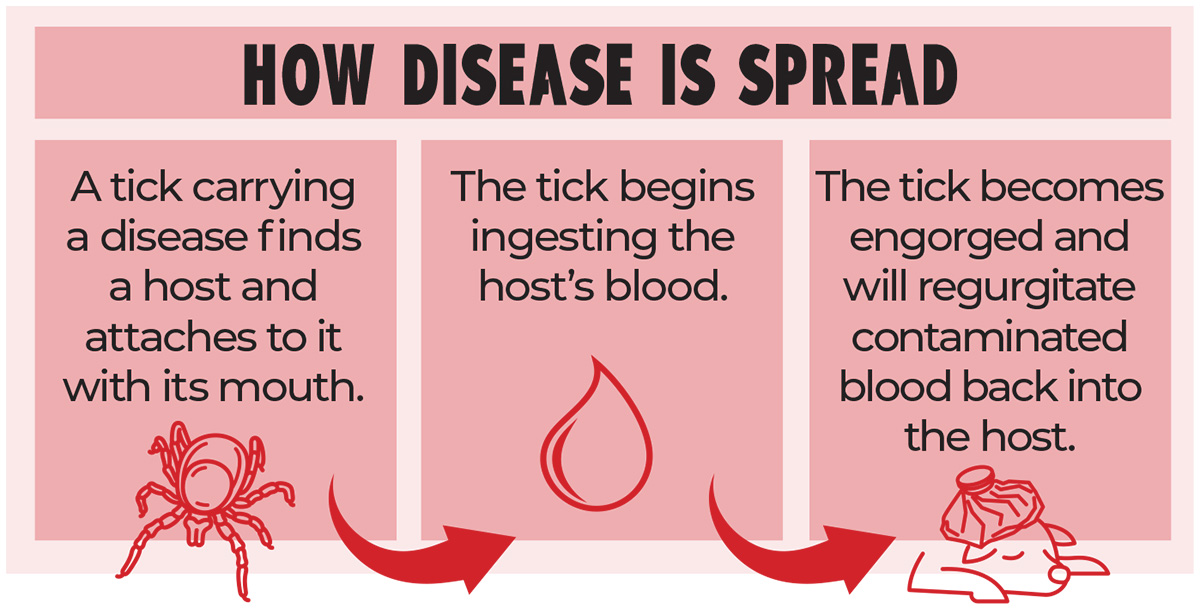
Over the past one-hundred years, deforestation has forced deer into more suburban areas with less threat from predators and stricter hunting laws. These factors have made it possible for their population to rapidly increase. Deer are common hosts for deer ticks, and as their numbers increased in these suburban areas, so did the deer ticks. Hosts such as White-footed mice and Robins are plentiful in these areas as well and further contribute to the spread of the bacterium. Additionally, warmer winters accelerate ticks’ lifecycles and allow them to survive an estimated 28 miles further north each year.

In humans, one of the tell-tale signs of Lyme disease is the appearance of a rash that resembles a bull’s eye. The rash often appears within several days up to one month after being bitten. It is normally found at the sight of the tick bite, but can appear anywhere on the body. While it is not typically itchy, it may grow in size and remain for days or weeks. Other signs include symptoms that resemble the flu, lack of energy and joint pain.
Dogs that have contracted Lyme disease may not become ill or even show symptoms that they have been infected. Despite this, when tested, they can still have a positive result. Unlike humans, dogs will not get a rash. Instead, symptoms of infection may manifest through loss of appetite, lethargy or limb lameness, which swaps between legs.
The duration of treatment using oral medication usually lasts for several weeks. It is important for humans to limit their exposure to the sun while on this medication. Additional treatments available to both dogs and humans to help ease joint and muscle pain can include massage, acupuncture, MagnaWave therapy and red light therapy.
Monthly preventatives are available for dogs in topical and oral forms. Dog owners should discuss with their veterinarian which preventative is right for their individual dog. Additionally, there is a now Lyme vaccine available for dogs.
Tick-borne illnesses are unarguably on the rise with the number of cases diagnosed in humans and dogs climbing annually. This threat is not likely going away anytime soon due to environmental changes allowing ticks to expand in areas ripe with hosts, which have allowed disease-causing bacterium to spread. Understanding the risk of exposure in your area, along with practicing prevention methods and being vigilant for signs of infection, will keep both you and the dogs you care for enjoying the outdoors in all seasons.
- About Lyme Disease Symptoms. (2009, November 14). Lyme Disease Association. https://lymediseaseassociation.org/lyme-tbd/medical/lyme-disease-symptoms/
- Prevent Lyme Disease. (2023). CT.gov – Connecticut’s Official State Website. https://portal.ct.gov/DPH/Epidemiology-and-Emerging-Infections/Prevent-Lyme-Disease
- Ancient History of Lyme Disease in North America Revealed with Bacterial Genomes. (2017, August 28). Yale School of Medicine. https://medicine.yale.edu/news-article/ancient-history-of-lyme-disease-in-north-america-revealed-with-bacterial-genomes/

New Products

GLO REVOLUTIONARY CAT LITTER
Boxie®, creators of the first Self-Cleaning Litter™ with probiotics, proudly unveils Glo™, an innovative cat litter solution designed to revolutionize the feline litter box experience. Glo™ represents a groundbreaking advancement in litter technology, leveraging patent-pending UV crystals that only cats can see to guide them to their litter box with unprecedented precision. By prioritizing elements such as paw feel, scent attractants, and the proprietary UV Glo™ crystals, Boxie® provides a proactive solution to address the health and well-being of feline companions by creating healthy litter box habits. Available in clumping clay, non-clumping crystal, and clumping corn varieties. www.boxiecat.com

BSERENE CALMING PRODUCT LINE FOR PETS
A trailblazer in pet calming solutions, bSerene™ proudly introduces the most comprehensive lineup of calming products for cats and dogs. The groundbreaking collection features a range of targeted and specific products that can be layered and combined to create a customized calming solution for each pet’s specific calming needs, whether it’s fear of thunder, separation issues, or general uneasiness. Among the innovative tools in the bSereneTM collection, the Advanced Cat Calming Diffuser Kit uses dual pheromones (Mother Appeasing Pheromone and F3) for multi-cat harmony. Other products include sprays, collars, spot-on treatments, and chews for both dogs and cats. www.scientiapet.com










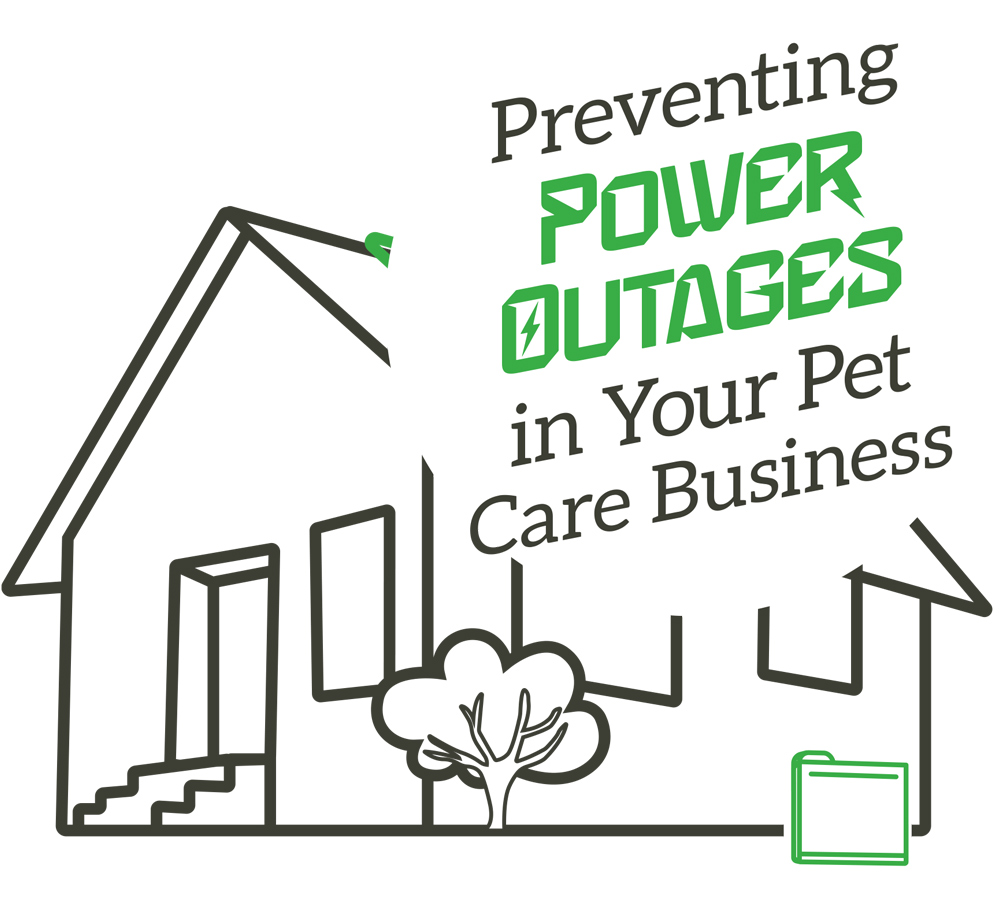




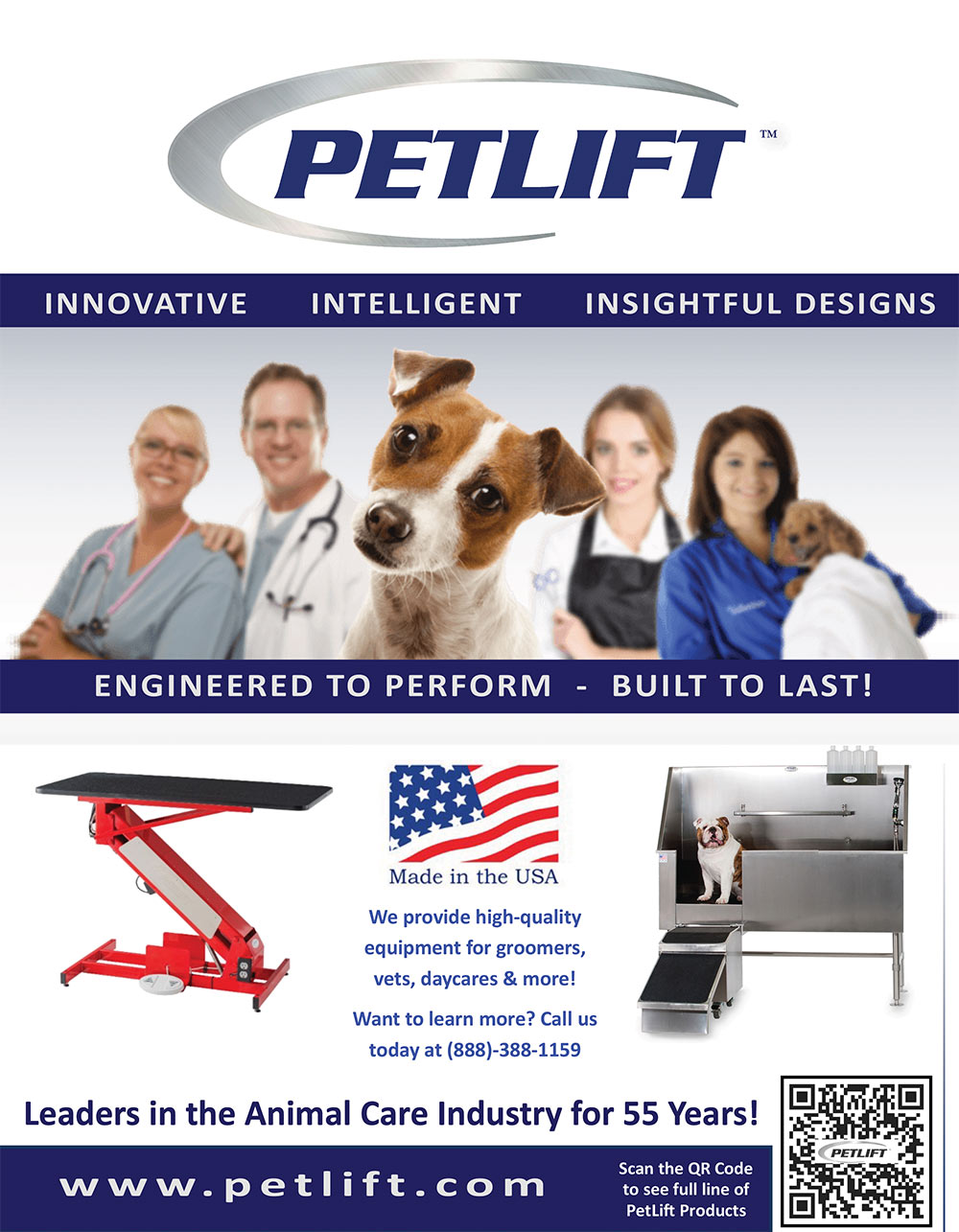

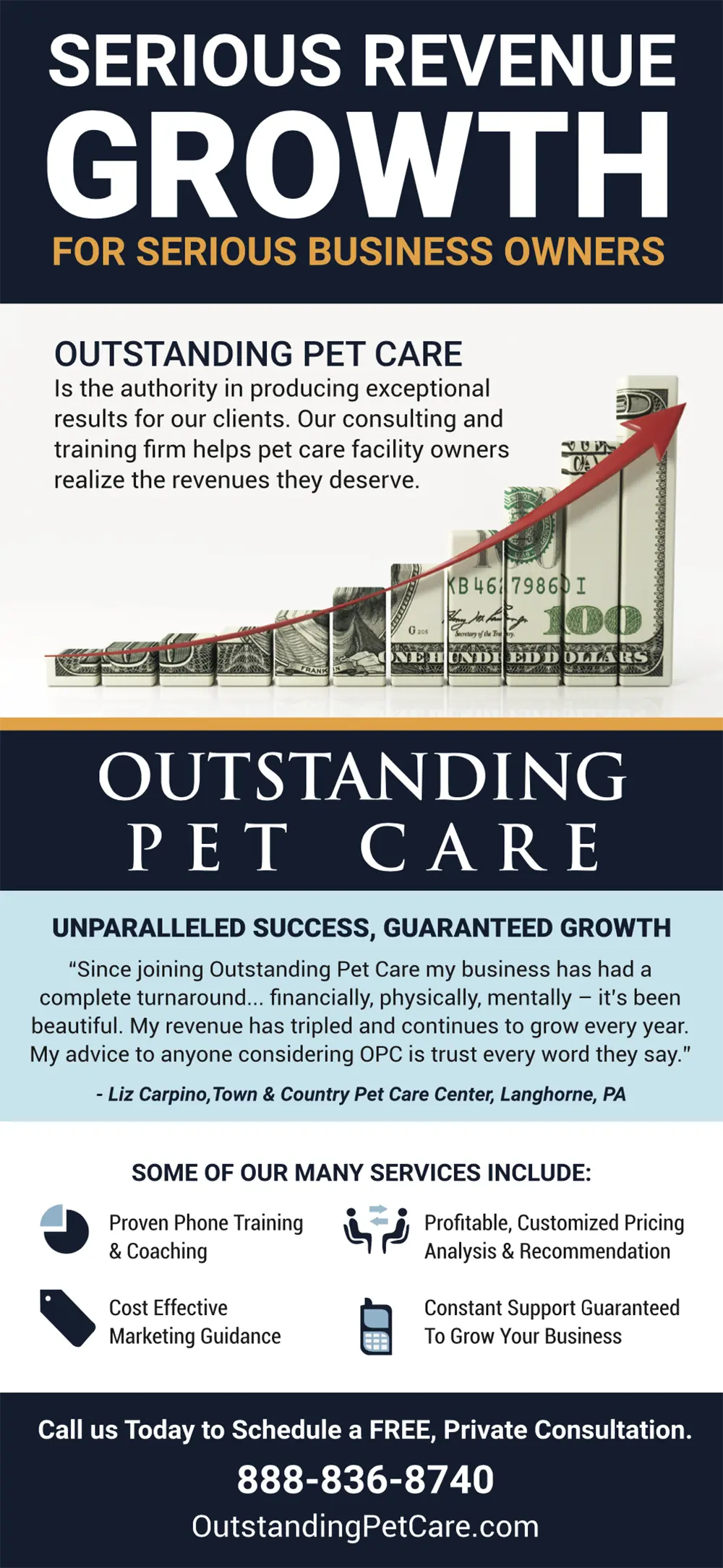




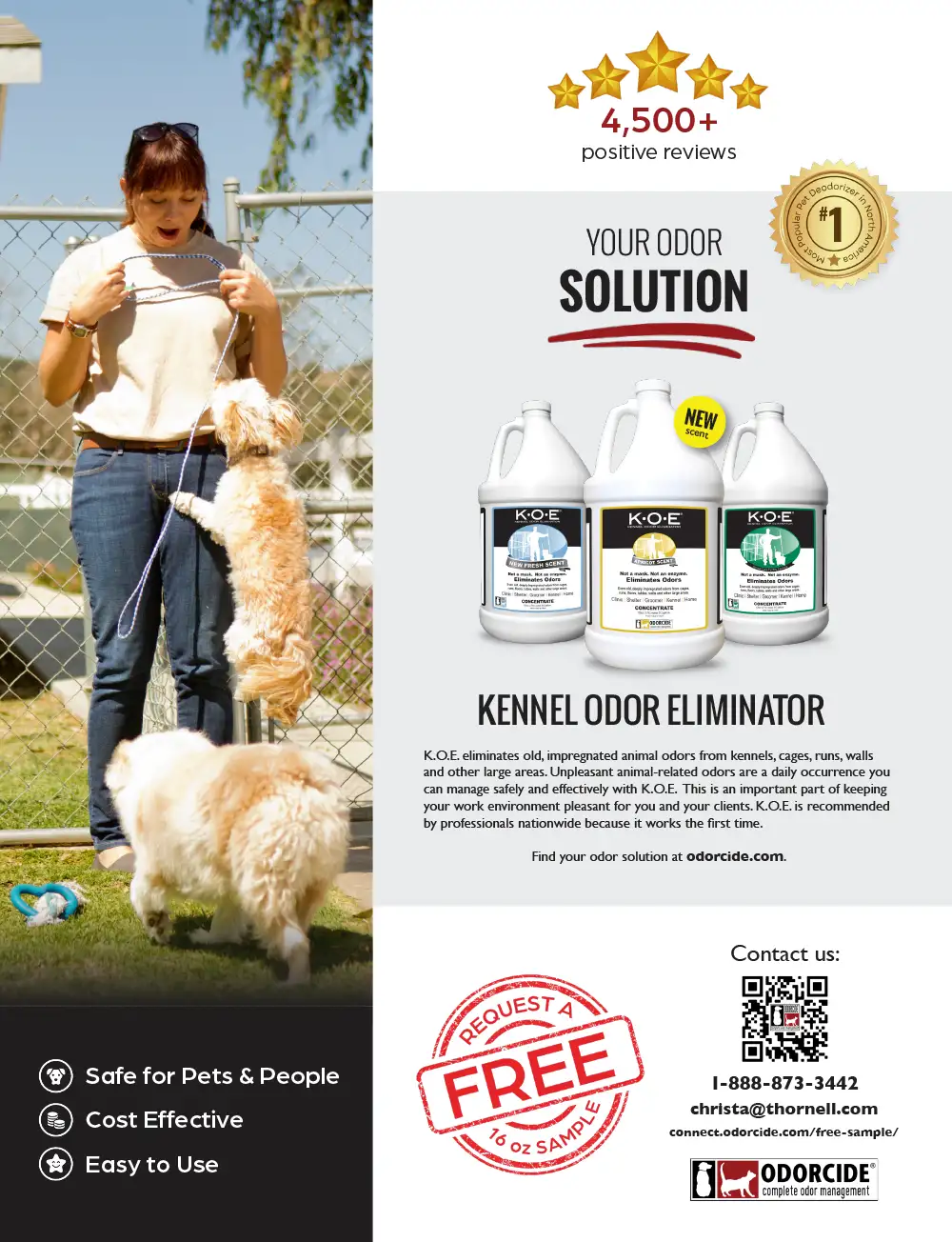






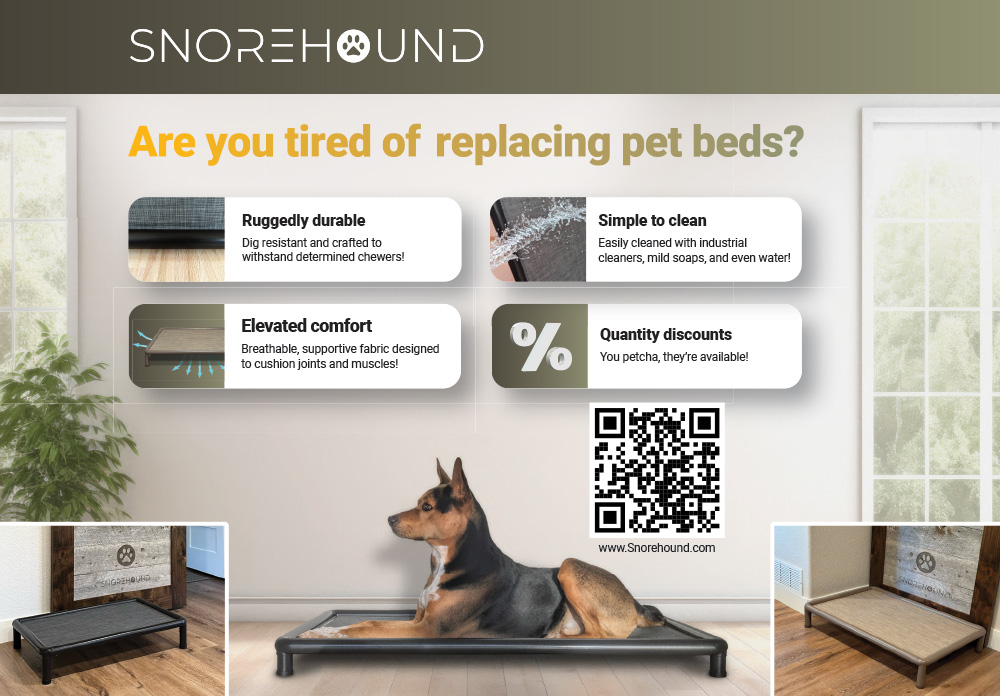







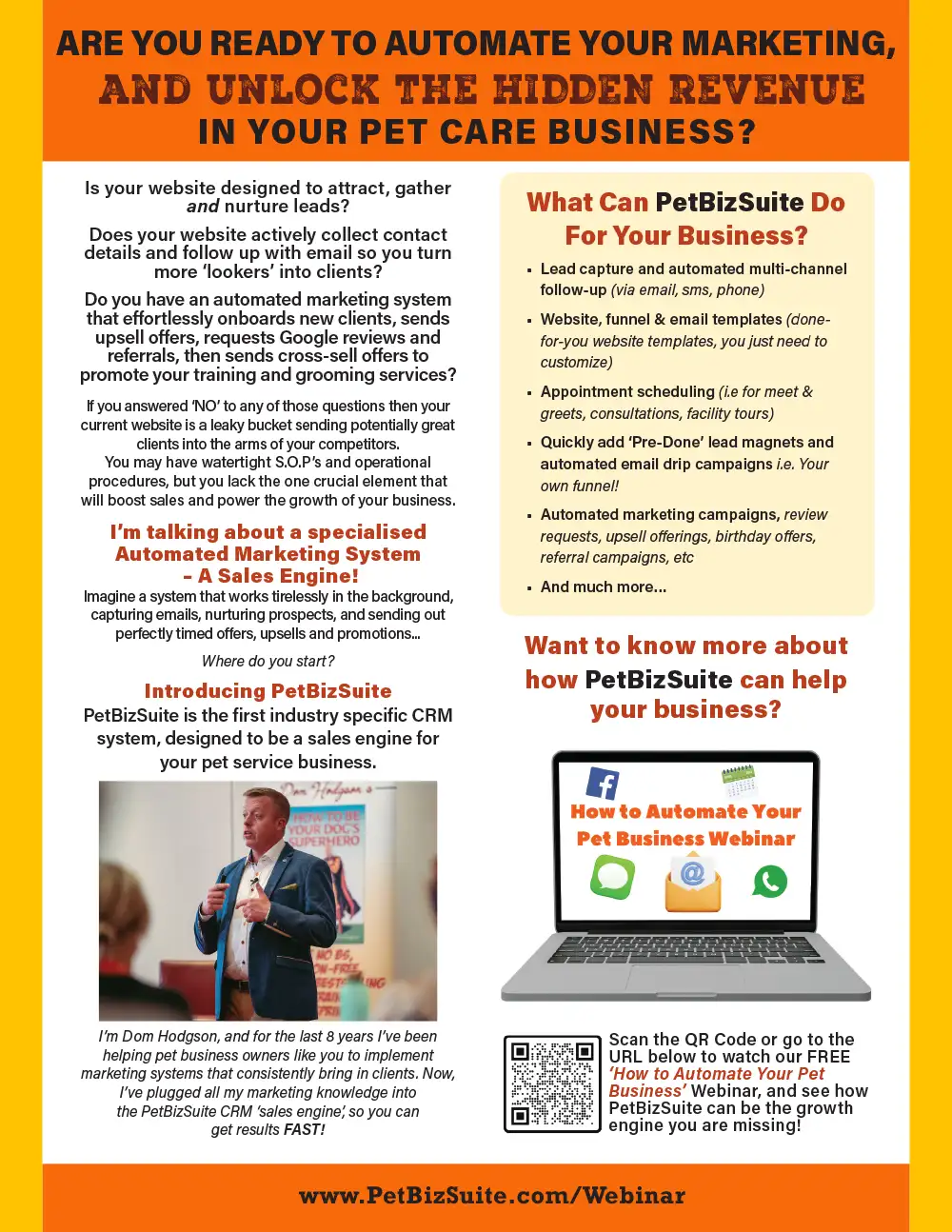





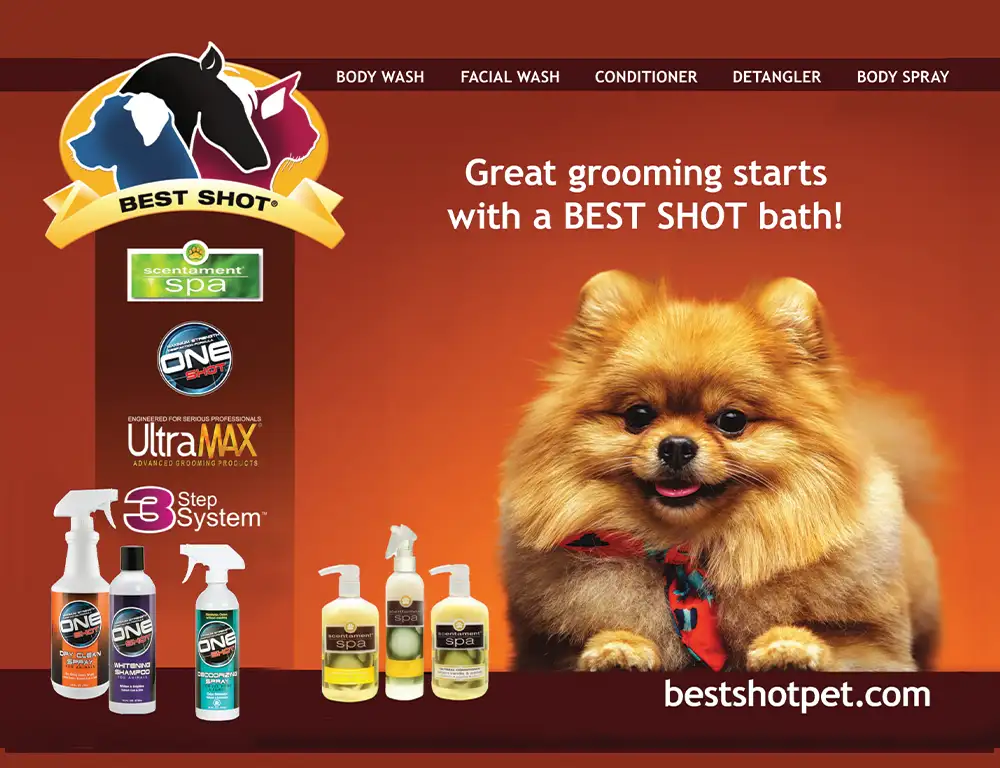



Profile of Success
Photos Provided by Social Pet Hotel & Daycare
“But in-between those moments,” adds co-founder and CEO, Bill Hillis, “were the rays of hope and joy that maybe we were doing it right, making a difference, and leaving a lasting impact on the world.”
Bill and Amy Hillis are definitely making a difference and are creating a huge impact in the pet hospitality field. In the last 10 years, Social Pet has grown to three locations in the Charlotte, North Carolina area. They have over 75 employees, care for 150-300 dogs daily and are on track to make $4.4 million in gross revenue in 2024.
“Most of the pet care options in our area were mediocre at best, but they were always busy,” Bill shares. “There was a clear need for a better experience that put the needs of the dogs first, and we set out to provide that.”
At the time, Amy was a middle school teacher. Then she became the school’s academic facilitator, focusing on curriculum and testing.
“In those positions, I saw there was an important need to differentiate and provide individualized instruction to each student,” explains Amy. “And whether they were fast learners or needed more support, I saw the benefits when that program was followed.
At Social Pet Hotel & Daycare, Bill and Amy’s team always puts the needs of the animal first, and they place great emphasis on personalized care and enrichment activities for every dog. Client interaction and education are also important to them so that pet parents understand why Social Pet is different and how its programs will benefit their dog.
Even with over 100 other pet care businesses offering daycare and boarding in the Charlotte area, Bill and Amy found a way for Social Pet to differentiate itself from the competition, and it begins with the first contact that pet owners have with them.
Even with over 100 other pet care businesses offering daycare and boarding in the Charlotte area, Bill and Amy found a way for Social Pet to differentiate itself from the competition, and it begins with the first contact that pet owners have with them.
“We also spend a lot of time on the phone with a new client, answering their questions, explaining the various enrichment activities, and discussing our safety protocols, where other businesses may simply send them to their website,” Amy shares. “Even with this process—one that many may consider to be a barrier to entry and especially considering we are one of the highest-priced in the area—our client conversion rate is 97% and we are up over 30% from 2023.”
Additionally, new clients are encouraged to take an in-person tour of their facility.
“We want people to see what we are doing,” she continues, “setting the standard for what pet parents should expect and deserve. They can see our play areas and our sleeping accommodations. They can ask questions and talk to us about our training, certifications, and safety protocols, and also experience how clean everything is and how good it smells. Being open and available to the owners provides tremendous peace of mind to them.”
“We understand the lifetime value of a client,” adds Bill. “We offer intentional introductory discounts. We know that if we can get clients in the door and they experience our services, then we can retain them. Our retention rate is over 95%.
–Amy Hillis, co-founder and Chief Strategy Officer of Social Pet Hotel & Daycare
Staffing can be one of the most difficult parts of a business. But, both Bill and Amy are passionate about providing their team members with not just a job, but a fulfilling career.
“We take care of our employees and make sure they have what they need to do their jobs and to have a work-personal life balance,” Amy says. “That translates into them being able to provide the best care for the dogs.
“We want to give our team members what they need to thrive in their jobs and make them a career path—whether it is grooming school, dog training, management, marketing, etc.,” Bill adds. “We showcase to our clients how well our team members work together and how that benefits their dogs.”
Bill and Amy firmly agree that part of the challenge of growth and one of the reasons they feel they are successful is how engaged they are with their own people and how effective they are as leaders and managers.
– Bill Hillis, co-founder and CEO of Social Pet Hotel & Daycare
“In order for your business to grow, you have to grow as a person,” adds Bill. “That starts with Amy and me. Our plan is to never stop learning, and we both believe in pursuing relevant certifications through some of the industry’s leading organizations. I am also an Advisory Board Member for IBPSA (International Boarding & Pet Services Association), and Amy is the current outgoing Board Chair of PACCC.
“Why some businesses struggle is that they focus solely on the clients that are in the door that day,” he continues. “If you’re not paying attention to your sales and marketing, you’re not doing anything to lay the groundwork for your future. We must continue to evolve and grow to be effective and be relevant tomorrow.”
– Bill Hillis, co-founder and CEO of Social Pet Hotel & Daycare
“Through our marketing efforts we’ve seen our revenue per dog increase, as well as our occupancy and quality of reservations, and we are able to promote more services,” shares Bill. “It lets the owners know what we offer, and it all comes back to doing what’s best for the dog. We want the dogs to be comfortable and be cared for.”
In just 10 short years and with three successful locations of Social Pet Hotel & Daycare, Bill and Amy Hillis have fulfilled their dream to enrich the lives of dogs and the relationships they share with those who love them—and they are far from done!